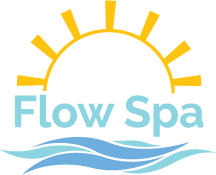Struggling With Inflammation? Should You Use Sauna or Cold Plunge?
Chronic inflammation has become one of the most talked-about health concerns of our time. It can be tied to the root cause of many conditions that we face today. From joint pain and fatigue to mood issues and digestive problems, inflammation touches nearly every aspect of how we feel day to day.
But here's where it gets interesting: both heat and cold therapies have shown promise in fighting inflammation.
So, which approach should you choose? And could combining them be even better?
Let's break down what the research says and what our clients actually experience with each option.
The Heat Approach: Infrared Sauna
What The Research Says
Infrared sauna therapy has impressive anti-inflammatory credentials. Studies show regular sauna use can significantly reduce C-reactive protein (CRP) levels: a key marker of systemic inflammation. Research published in the European Journal of Epidemiology found that people who used saunas regularly had lower CRP levels. The benefits seem to start at around 1 hour of total time per week in the sauna.
The heat triggers your body's natural healing response. Your core temperature rises, blood vessels dilate, and circulation improves dramatically. This enhanced blood flow helps remove inflammatory waste products while delivering fresh oxygen and nutrients to damaged tissues.
Perhaps most importantly, sauna use activates heat shock proteins. These are your body's internal repair crew that helps damaged cells recover and function better.
What Our Clients Experience
"It's like a warm hug for my entire nervous system," describes one regular client who uses our infrared sauna three times weekly for arthritis pain.
The infrared sauna experience is gentle and meditative. Most people find it deeply relaxing. Your heart rate increases gradually, mimicking moderate exercise without the physical stress. And because the infrared sauna isn’t as hot as a traditional sauna, it’s better tolerated by people who can’t stand extreme heat.
Clients consistently report:
Better sleep quality after sessions
Reduced joint stiffness the next day
A profound sense of calm that lasts hours
Improved mood and mental clarity
The infrared sauna promotes nervous system down-regulation, shifting you from the stressed "fight or flight" state into the healing "rest and digest" mode.
The Cold Approach: Cold Plunge
What The Research Says
Cold water immersion creates a different but equally powerful anti-inflammatory response. When you're exposed to cold, your body releases norepinephrine, a hormone that acts as a natural anti-inflammatory agent.
A 2025 review of cold-water immersion suggests that it initially there’s a spike in inflammatory markers due to the stress response of being in the cold water but this is followed by a reduction in stress later in the day and an anti-inflammatory effect because of it.
The cold also triggers brown fat activation, which burns calories and produces anti-inflammatory compounds. Plus, the vasoconstriction followed by vasodilation when you warm up acts like a cardiovascular workout for your circulatory system.
What Our Clients Experience
Cold plunge therapy is intense but brief. Most sessions last just 2-4 minutes, but the effects are immediate and energizing.
"I feel like I can conquer anything after a cold plunge," says a client who uses it to manage chronic fatigue symptoms. "It's like hitting a reset button on my entire system."
The experience amps up your nervous system initially, teaching your body to better tolerate stress. This improved stress resilience translates into better inflammation management throughout the day.
Clients report:
Immediate energy boost and mental clarity
Reduced muscle soreness after workouts
Better stress management in daily life
Improved mood and confidence levels
While challenging in the moment, most people develop an almost addictive relationship with how good they feel afterward.
The Winning Combination: Contrast Therapy
Should you cold plunge or sit in a sauna to manage inflammation?
What The Research Says
Using heat and cold together— what I like to call contrast therapy—may offer the best of both worlds. The alternating temperatures create a "vascular gymnastics" effect, rapidly opening and closing blood vessels to enhance circulation and lymphatic drainage.
Research on contrast therapy shows enhanced recovery in athletes, reduced inflammation markers, and improved immune function. The combination appears to optimize your body's natural healing mechanisms.
What Our Clients Experience
Contrast therapy clients get both relaxation and stimulation in one session. They typically start with 15-20 minutes in the infrared sauna, followed by 2-3 minutes in the cold plunge, then return to gentle heat to finish.
"It's the perfect balance," explains a client who uses contrast therapy for fibromyalgia management. "I get the deep relaxation from the sauna and the energizing effects from the cold. I leave feeling both calm and alive."
The experience is:
Deeply restorative yet energizing
More comprehensive than either therapy alone
Surprisingly addictive once you experience the full cycle
Effective for both acute and chronic inflammatory conditions
So Which Should You Choose?
The answer depends on your specific needs, preferences, and lifestyle:
Choose infrared sauna if you:
Deal with chronic stress or anxiety
Prefer gentle, meditative experiences
Have sleep issues or need a nervous system calming
Choose cold plunge if you:
Need energy and mental clarity
Enjoy intense but brief challenges
Want to build stress resilience
Prefer immediate, energizing effects
Choose contrast therapy if you:
Want comprehensive inflammation and recovery management
Enjoy varied, dynamic experiences
Have time for longer sessions
Want both relaxation and energization benefits
Your Next Steps
Start with whichever approach appeals to you most. Consistency matters more than perfection for getting lasting anti-inflammatory effects. Many clients begin with one modality and gradually add the other as they become more comfortable.
Consider your current stress levels, energy needs, and schedule when making your choice. And remember, you can always experiment with different approaches to find what works best for your body and lifestyle.
The most important step is simply starting. Your inflammation levels, and overall well-being, will thank you for taking action.
To experience the anti-inflammatory benefits for yourself book a session and discover which approach resonates with your body's unique healing needs.



